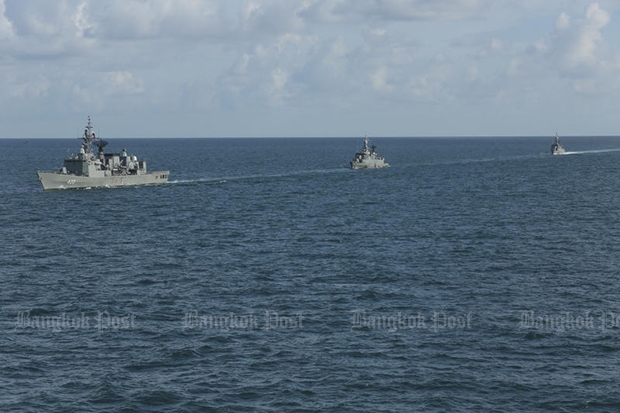
Thai waters are safe from radioactive contamination discharged by the Fukushima nuclear power plant disaster in 2011, according to the Office of Atoms for Peace, after five years of monitoring tests.
Suchin Udomsomporn, director of the office's Bureau of Technical Support for Safety Regulations, said yesterday the office has regularly checked for radioactivity in sea water samples taken from both the Gulf of Thailand and the Andaman Sea since the Fukushima nuclear plant disaster in Japan during the 2011 tsunami.
The team checked for Caeseum-137, one of the radioactive substances which leaked from the plant, and found no trace of it. Water samples were collected three times a year.
The office launched a similar monitoring programme for radioactive substances in the sea in 1987, a year after the Chernobyl nuclear plant exploded in 1986 which affected more than 2.7 million people in Russia, she said.
No trace was found on that occasion either.
"But we don't know about impact on plankton. This is why we need a further five-year plan on monitoring the marine ecological system," she added.
The plan will start next year and end by the year 2022.
In response to the Fukushima power plant disaster, the office has opened underwater radioactivity monitoring stations in Rayong, Phuket, Ranong, Chumphon and Songkhla.
On March 11, 2011, the tsunami hit the Fukushima nuclear plant and destroyed the emergency generators cooling the reactors, causing reactor 4 to overheat.
That led to three nuclear meltdowns and the release of radioactivity into the sea.
The Fukushima disaster is the largest nuclear disaster since the 1986 Chernobyl disaster and the second disaster to be given a level 7 event classification on the International Nuclear Event Scale.
There have been no fatalities linked to radiation due to the accident.
In 2013, the World Health Organisation said residents were evacuated from the area in the wake of the disaster were exposed to low amounts of radiation and that radiation-induced health impacts are likely to be low.
